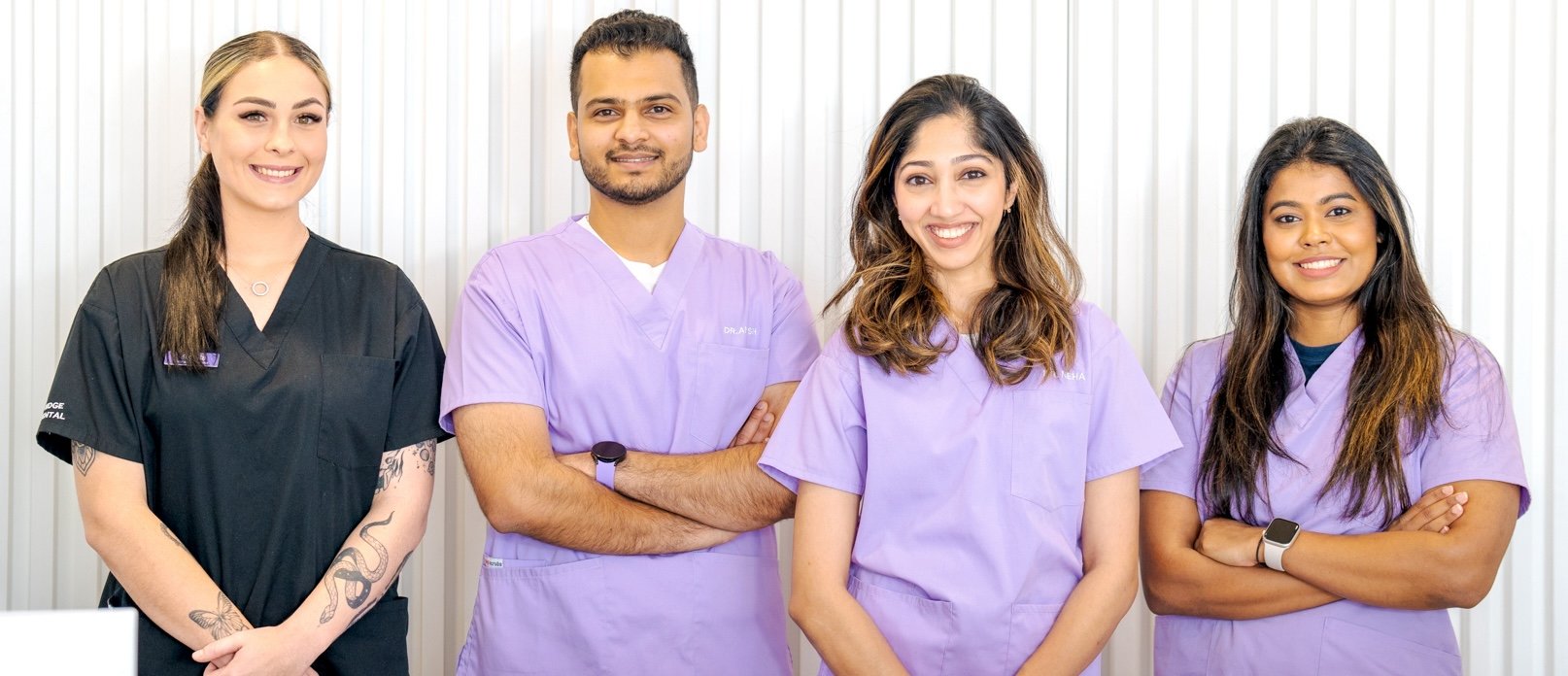
Toowoomba Dental X-Rays
The Importance of Dental X-Rays with Dr Anish
Dental X-rays are a vital diagnostic tool in maintaining optimal oral health. "Dental x-rays are crucial because they allow us to see parts of the teeth and surrounding structures that are not visible during a regular dental examination," explains Dr. Anish of Middle Ridge Family Dental. They help diagnose conditions like cavities, tooth decay, impacted teeth, and bone loss, allowing for timely and effective treatment.
Indications for Dental X-Rays
Patients may be recommended for dental x-rays if they experience symptoms such as unexplained tooth pain, sensitivity, swelling, or signs of gum disease. "If a patient has a history of dental issues or is undergoing treatments like braces, we might also use x-rays to monitor progress and make adjustments," Dr. Anish notes.
The various types of dental X-rays
There are several types of dental x-rays, each serving a specific purpose. Bitewing x-rays, for instance, show details of the upper and lower teeth in one area, useful for detecting decay between teeth. Periapical x-rays focus on one or two complete teeth from root to crown, helping identify root structure issues and surrounding bone abnormalities. Panoramic x-rays provide a broad view of the entire mouth, including the jaw, teeth, and sinuses, which is helpful for detecting cysts, tumors, and bone irregularities. Occlusal x-rays capture the floor of the mouth and are often used to track the development and placement of teeth in children.
The Role of Dental X-Rays
Dental x-rays are a fundamental aspect of modern dental care, offering invaluable insights into various oral health issues.
Wisdom Teeth Assessment
Dental x-rays are crucial for the assessment of wisdom teeth, which often become impacted due to insufficient space to emerge properly. "Impacted wisdom teeth can cause pain, infection, and damage to other teeth," explains Dr. Anish. Regular x-rays help track their development, allowing for early dental procedures, such as extraction, to prevent complications.
Diagnosing Periodontal Disease
Dental x-rays play a vital role in diagnosing periodontal disease, a severe gum infection that can lead to tooth loss if untreated. "Periodontal disease causes bone loss around the teeth, which can be accurately detected through x-rays," says Dr. Anish. By identifying the extent of bone loss, dentists can develop a targeted dental care plan to manage the disease.
Orthodontic Treatment Planning
Dental x-rays are essential in orthodontic treatment, providing detailed images of teeth alignment and jaw structure. "X-rays help us plan and monitor treatments like braces or aligners," explains Dr. Anish. By revealing underlying issues such as impacted teeth or jaw misalignment, x-rays enable orthodontists to create precise, individualized treatment plans that ensure effective and efficient correction of dental irregularities.
Dental Implants Planning and Placement
Dental x-rays are critical in the planning and placement of dental implants. "X-rays allow us to assess the bone structure and determine the best location for the implant," explains Dr. Anish. They help ensure the implant is securely anchored and positioned correctly, providing a stable foundation for replacement teeth. By using x-rays, dentists can create a precise treatment plan that increases the success rate of dental implants.
Monitoring Bone Levels and Bone Health
Dental x-rays are essential for monitoring bone levels and overall bone health in the jaw. "X-rays help us detect changes in bone density and identify issues like bone loss that can affect oral health," says Dr. Anish. Maintaining healthy bone levels is crucial for supporting teeth and dental implants, as well as preventing conditions like periodontal disease. By regularly assessing bone health through x-rays, dentists can implement early interventions to preserve bone structure and ensure long-term oral stability.
The X-Ray Procedure
"The x-ray procedure is quick and painless," assures Dr. Anish. Patients will be asked to wear a lead apron to protect against radiation exposure and may need to bite down on a small device or stand still while the machine rotates around their head. The entire process usually takes only a few minutes.
Digital X-Ray Technology
At Middle Ridge Family Dental, they use digital x-ray technology. "Digital x-rays are more efficient and produce less radiation than traditional film x-rays. The images are instantly available on our computer system, allowing us to quickly assess and discuss the findings with our patients," Dr. Anish explains.
Follow-Up After X-Rays
After x-rays are taken, the findings are reviewed with the patient, and any necessary treatment plans are discussed. "If any issues are detected, we will outline the recommended treatment plan. Follow-up appointments may be scheduled to address any problems identified during the x-ray examination," says Dr. Anish.
Common Misconceptions About Dental X-Rays
One common misconception about dental x-rays is that they are harmful due to radiation exposure. "While it's true that x-rays involve radiation, the level of radiation is extremely low, especially with modern digital x-ray technology," Dr. Anish reassures. Another misconception is that x-rays are only necessary if there is a problem. In reality, regular x-rays are essential for preventive care and early detection of issues that may not yet present symptoms.
Alternatives to Dental X-Rays
Though there aren't direct alternatives to dental x-rays that provide the same level of detailed internal imagery, advancements like 3D imaging and intraoral cameras can complement x-rays by offering different perspectives of the mouth. However, dental x-rays remain the most effective tool for a comprehensive internal view.
To make dental x-rays affordable, Middle Ridge Family Dental offers flexible payment plans, works with various insurance providers, and provides discounts for regular check-ups that include x-rays. "Our goal is to ensure that financial concerns do not prevent patients from receiving the care they need," Dr. Anish emphasises.

The Middle Ridge Family Dental Difference
What sets Middle Ridge Family Dental apart is their patient-centred approach. "We combine state-of-the-art technology with a warm, welcoming environment to ensure our patients feel comfortable and well cared for," Dr. Anish shares. Their team is dedicated to continuous education and training, ensuring they provide the latest and most effective dental treatments. They also emphasise preventive care and patient education, helping patients maintain their oral health between visits.
